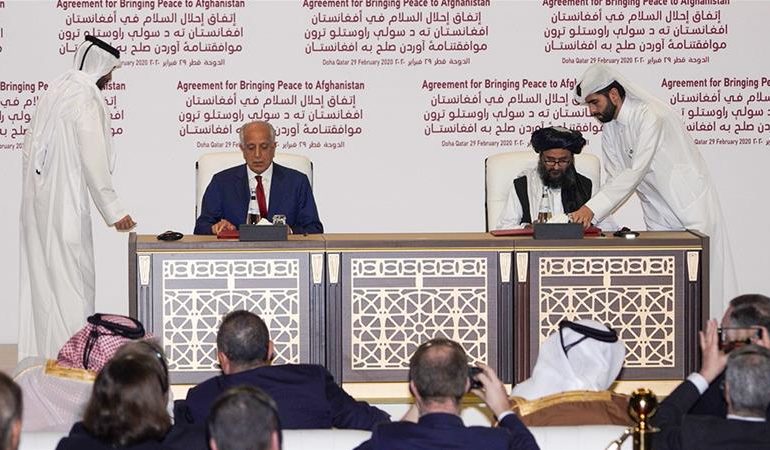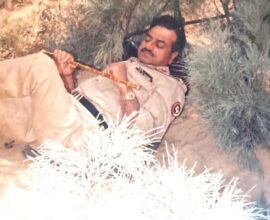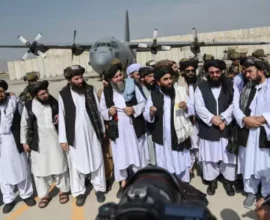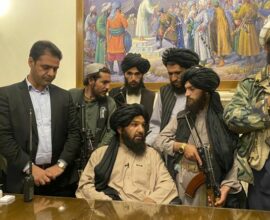Doha Agreement:potentials and prospects
The US and Taliban (not the Afghan government) inked a deal in Doha on 29 February ,chalking out map of the withdrawal of The US and its allies from Afghanistan, which is being seen as a huge step forward to bring peace and stability in Afghanistan. To what extent is this agreement practicable, we need to peek into Afghan history.
Reflecting at post 1979 scenario, the USSR invaded Afghanistan with its biggest war machinery in the world, and within a month, the Russians occupied the entire Afghanistan. Before the invasion, there were two political parties in Afghanistan: Khalq Party and Pacrham Party (both enjoyed the backing of KHAD and RAW). Both parties though rivals to each other, were pro socialist and pro-communist which paved the way for the Russians invasion.
In that scenario, the Pakistan government decided to side with the resistant forces, and successfully managed to halt the Russian advancement, which later encouraged the Americans to extend their support to the resistant forces. When the Russians were exhausted by gruella war and suffered colossal economic, military and human losses, they sought to leave Afghanistan.
General Zia-ul-Haq had a viable plan for the Afghan crisis: he wanted the Russians to clear all mines before leaving. He also wanted an election so that the people of Afghanistan could decide their future. The government of Pakistan established Slam Program in the lead of sir Agha Khan in Islamabad: to build infrastructure in Afghanistan.
But things took a coarser turn when PM Junejo convened an all Parties Conference (including Benazir Bhutto(late) . Unaware of the geo strategical and geopolitical consequences, the leadership decided to sign a peace deal with the Russians in Geneva. Noteably,The Russians inked the accord the government of Pakistan, not with the resistant forces in Afghanistan.
Geneva agreement gave the Russians a much needed graceful exit. Following the agreement, in a rather hurried move, the Russians left Afghanistan military machinery only to be amassed by the Afghan lords to continue for future internal conflicts. Soon, these warlords started to fight against each other for throne, killing thousands of fellow Afghans.
However, thanks to efforts of PM Nawaz Sharif and General Hamid Gul(late) that Mecca Accord was signed amongst the warring lords which gave a hope that peace with ensue in Afghanistan. Moulana Ghulam Nabi was made the president with a premise to hold the elections. Ghulam Nabi stepped down, upholding the promise,but his successor Burhan uddin Rabbani backtracked. He had good family ties with Ahmed Shah Masood of the Northern alliance. That act of betrayal led to further chaos in already ravaged Afghanistan. That bedlam led to the arrival Taliban who ran through Kabul and restored peace in Afghanistan. They hanged prominent leaders including Dr. Najeebullah, Burhan uddin Rabbani and Arsala Khan .
The woes in Afghanistan did not end there; in fact, the unfortunate 9/11 attack, Afghanistan became yet another battle field between the US and its allies. History witnessed hitherto another epic war between the biggest superpower of the world and the Taliban. History repeated and the US was forced to the negotiation table and eventually sign an agreement in Doha. Would its fate be similar to the previous accords or it holds something good in store for us. It’s important to mention here that various warlords, mainly the northern alliance and the present government are not the part of the accord.
Three important political parties of Afghanistan and Abdullah Abdullah , Hamid Karzai and Ashraf Ghani are not a party to this agreement . Ashraf Ghani government did not allow Pakistani High Commission in Kabul to commemorate the Kashmir Day this year and last year as well. These parties an obvious having leaning to the Indians, though they have deep internal differences, similar to the Khalq party and Pacrham of 1970 era.
Apart from internal threats to Doha agreement, many foreign players are not pleased with this treaty. The Indians are not very happy despite the fact that they have been second donors of foreign aid to Afghanistan, and deep military stakes have been sidelined. Moreover, Railway road to Tashkand which has not been operationalized appears to have doomed. Apparently, Iran is happy with the development because the significance of Chabhar Port has been grossly shadowed too. Iran has been supporting Northern alliance and would continue to do so, further undermining the peace treaty.
As agreed upon, the US and the allied would withdraw within fourteen months; however, the US is not likely to leave the battle field empty. They would equip and strengthen their ally to further their future interest in Afghanistan and beyond. It means fire in Afghanistan is not going to dowse.
Even after the withdrawal of the US from Afghanistan, Pakistan needs to be wary of international spoilers of CPEC. To face the challenge our civ-mil establishment, the political and religious parties would have to play a mature role to avert any other crisis at the Western front and a flood of refugees, which Pakistan would not be able to host any more.
The writer is an academic based in Islamabad can be reached at sliklight55@gmail.com





